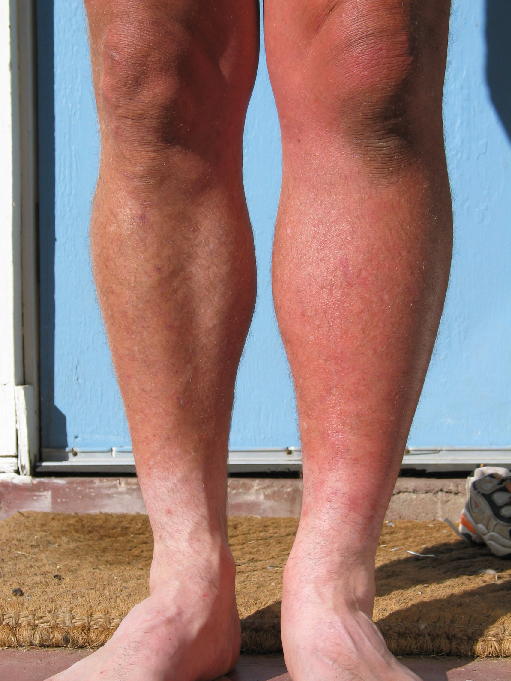A Pulmonary Embolism (PE) is when the Blood clot in the deep vein of the leg breaks loose and goes to the lungs.
The most common complication is Post Thrombotic Syndrome (PTS), the gradual development of pain, swelling and red or brown discoloration of the lower leg.
Since March is DVT Awareness Month, this is a good time to evaluate your risk for DVT and learn how you can prevent it.
The staff at Vein Specialists of the Carolinas is committed to your vein health and wants to educate you about this condition to keep your veins in top form.
What is Deep Vein Thrombosis?:
Deep vein thrombosis (DVT) is characterized by the formation of a blood clot in a vein deep inside the body. Although DVT can affect veins in any area, it most commonly occurs in the veins of the lower leg. That is because these veins tend to work much harder to push blood back up the body to the heart, which makes them more vulnerable to damage and disorders.
DVT often occurs in people that cannot move their legs for a period, such as during an extended illness or after surgery. Some medical conditions can also increase your risk for DVT, including the underlying vein disorder associated with varicose veins. Venous insufficiency occurs when the veins stop working efficiently, allowing blood to pool inside. The changes in circulation and venous pressure may be a factor in the development of both varicose veins and DVT.
Symptoms of DVT:
You may have DVT without knowing since it often develops without any noticeable symptoms. When symptoms do occur with this condition, they might include:
- Swelling, which typically only occurs in the affected leg
- Painful cramping in the affected leg
- Redness or tenderness of the skin around the location of the vein
These symptoms require a call to a physician and a full vein assessment. If DVT is left untreated, it can evolve into a more serious medical condition, so treatment prior to complications makes for a better prognosis overall.
Potential Complications:
The biggest danger of DVT is when the clot in the leg vein breaks free and begins to travel through the bloodstream. That clot, or even a piece of it, can move into the lungs, blocking blood flow to this vital organ. This can result in a potentially life-threatening condition known as a pulmonary embolism. A pulmonary embolism is characterized by chest pain, shortness of breath and coughing up blood. Emergency treatment is required to remove the clot and restore normal function to the lungs.
To treat DVT, it must first be accurately diagnosed. At Vein Specialists of the Carolinas, we offer comprehensive vein assessments to detect DVT, venous insufficiency and other vein issues. Dr. Draughn is specialist in vein health and can advise you on the treatments that will work best for your specific situation. We want to raise awareness of DVT, PE, and of its most common complication PTS. Let Our RVT’s Look For DVT’s! Visit https://veinscarolina.com/vein-disorders/deep-vein-thrombosis-dvt/ to learn more and/or schedule your appointment today!
“All We Do Is Veins, All Day Every Day.”
#DVT #DVTAwareness #DVTAwarenessMonth #Veins #Veinscarolina #DeepVeinThrombosis #Healthylegs #health #veindoctor #PulmonaryEmbolism #PostThromboticSyndrome #alldayeveryday


